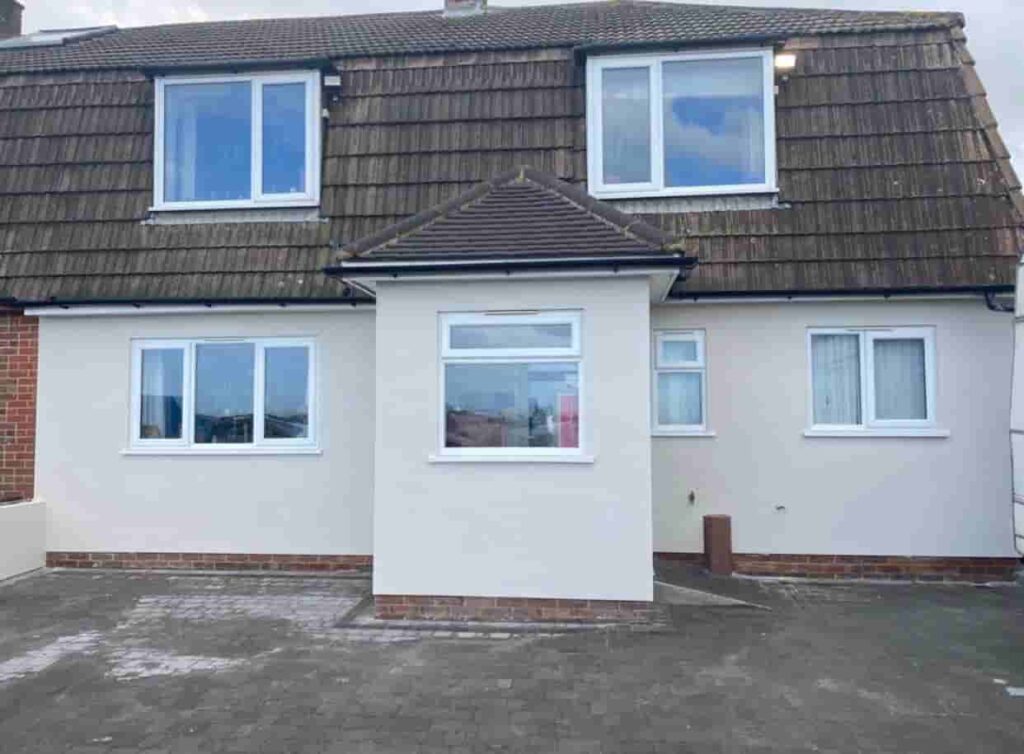Hailstorms can be sudden and severe, leaving behind visible and hidden damage to your roofing system. While not every hailstorm will cause immediate leaks, even small hailstones can weaken key components of your roof. At Sidcup Roofing Repairs, we regularly assist homeowners in Sidcup, Greater London with post-storm roof inspections and urgent repairs to minimise long-term structural issues.
Here’s what you should check straight after a hailstorm and how to act quickly to avoid escalating damage.
The Importance of a Prompt Roof Inspection
Hail may seem harmless at first glance, but it can cause:
- Cracked or broken tiles
- Bruised or punctured roofing materials
- Loosened flashing or sealants
- Blocked gutters and downpipes
Even minor damage can lead to water ingress, rot, and costly repairs if not addressed in time. A timely inspection ensures your roof remains safe and functional.
What to Look for After a Hailstorm
1. Visible Damage to Roof Tiles or Slates
Start by visually inspecting the roof from the ground or upper windows. Look for:
- Slipped, cracked, or shattered tiles
- Chipped edges or surface bruising
- Dislodged ridge or hip tiles
- Missing mortar between tiles
In Sidcup, Greater London, weather can change quickly. It’s important to check for damage while it’s still fresh.
2. Dents in Flashing and Roof Accessories
Flashing, vents, and other metal components are vulnerable to hail impact.
- Dented lead flashing or caps
- Bent metal trims
- Loose or warped vent covers
- Damaged skylight frames
These seemingly minor issues often result in water penetration during the next rainfall.
3. Gutter Blockages and Debris Buildup
Hail can break off tile fragments or clog drainage systems with leaves and debris.
- Overflowing gutters
- Sagging or detached downpipes
- Accumulation of hail or debris at roofline edges
Blocked gutters may lead to water backing up under your tiles or pooling at the eaves.
4. Signs of Leaks Inside the Property
Interior clues often show up days or weeks after a hail event.
- Water stains on ceilings or walls
- Damp insulation in the loft
- Musty odours or discoloured plaster
- Daylight visible through the roof space
If you notice any of these signs, it’s time to arrange an inspection from Sidcup Roofing Repairs.
What You Should Do Next
Carry Out a Safe External Check
Only assess your roof from the ground or with binoculars. Do not attempt to walk on the roof—this can be dangerous and may cause further damage.
Check Indoors for Water Intrusion
Inspect the loft and upper ceilings for any early signs of water damage, even if none is immediately visible from outside.
Document the Damage
Take clear photos of any issues you see. This can assist with your insurance claim or help your roofing contractor assess the extent of repairs needed.
Arrange a Professional Roof Inspection
A qualified roofer from Sidcup Roofing Repairs can assess:
- Structural condition
- Hidden damage not visible from ground level
- Urgent versus non-urgent repairs
- Recommendations for full restoration
Acting quickly can help prevent larger structural issues and protect your home’s value.
Conclusion
After a hailstorm, your roof may appear undamaged at first—but even light hail can compromise tiles, flashing, and drainage systems. Quick action is essential. At Sidcup Roofing Repairs, we provide thorough post-storm assessments and high-quality repairs for properties across Sidcup, Greater London. If your home has recently been hit by hail, contact our team to ensure your roof is secure, watertight, and ready for whatever the weather brings next.
Call us on: 0208 059 8598
Click here to find out more about Sidcup Roofing Repairs
Click here to complete our contact form and see how we can help with your roofing repairs.

